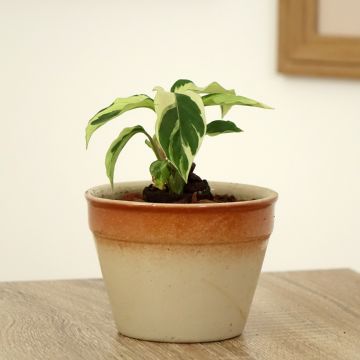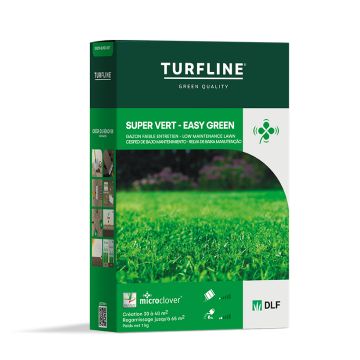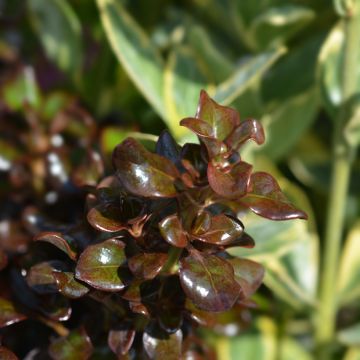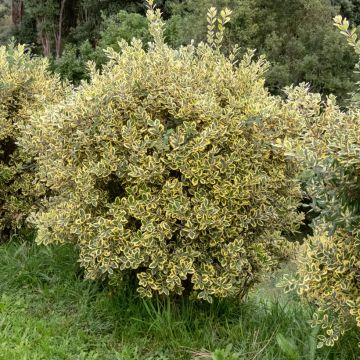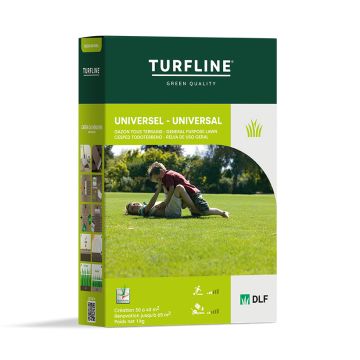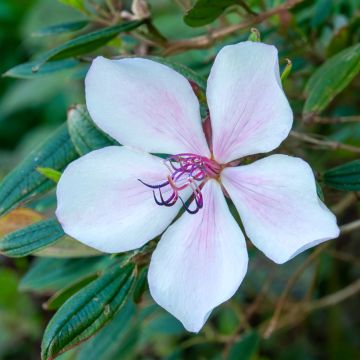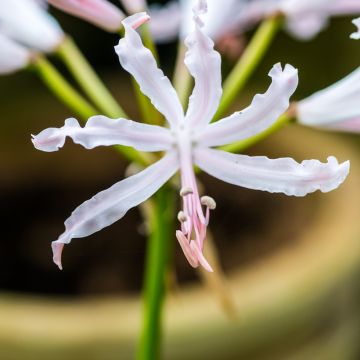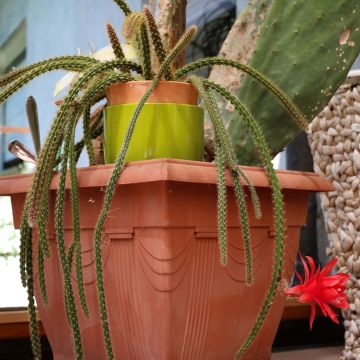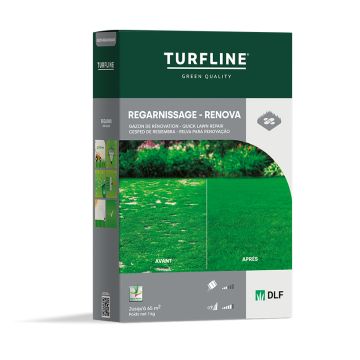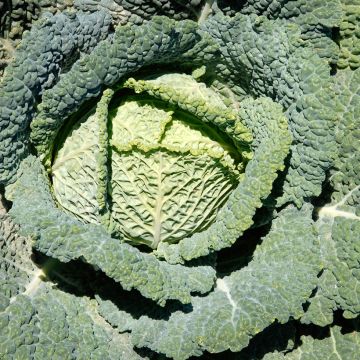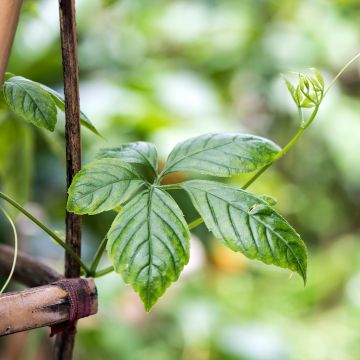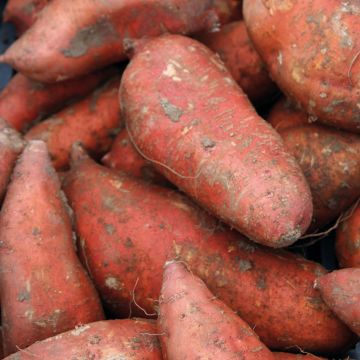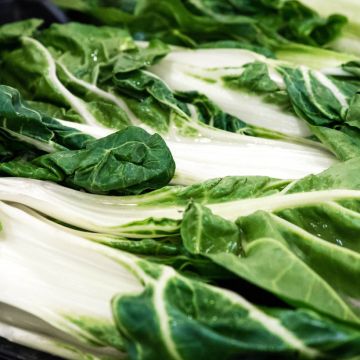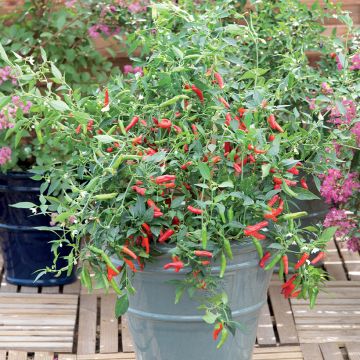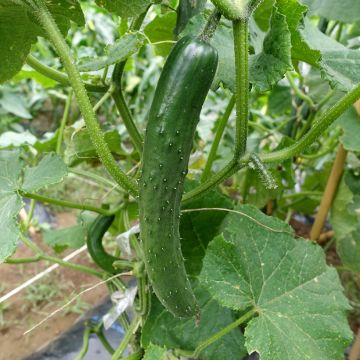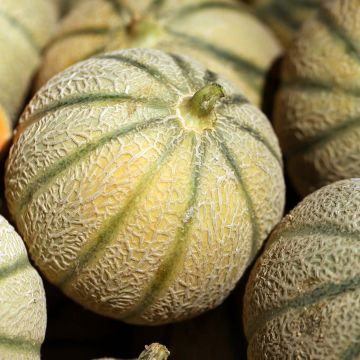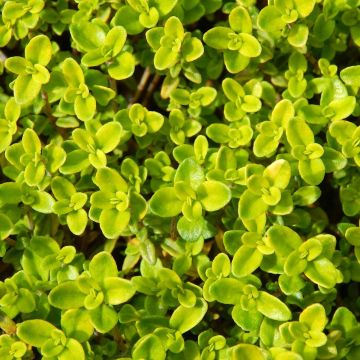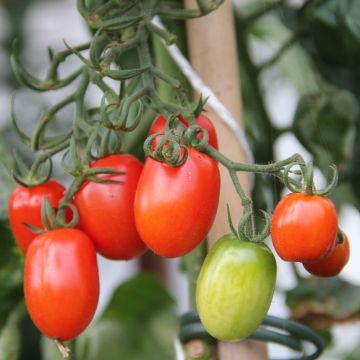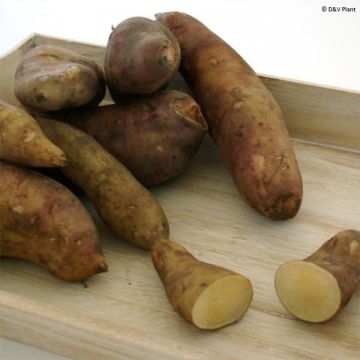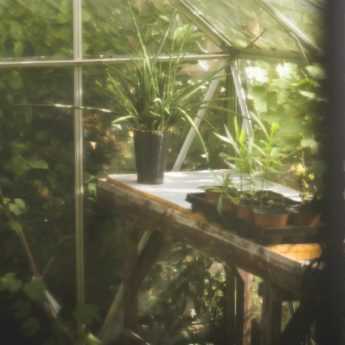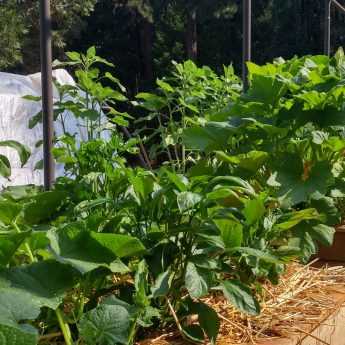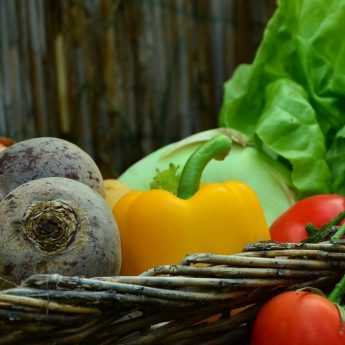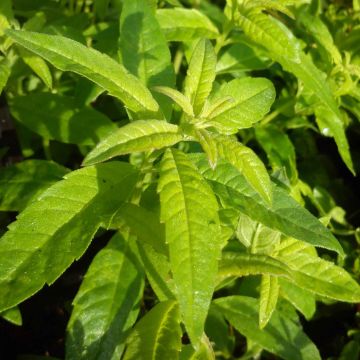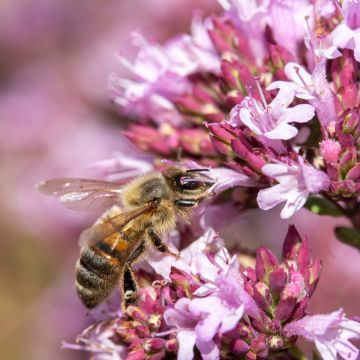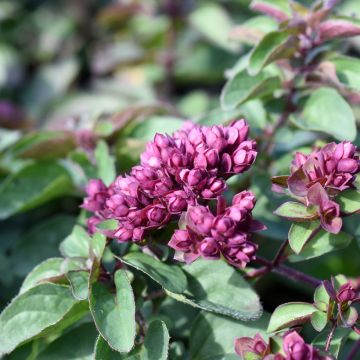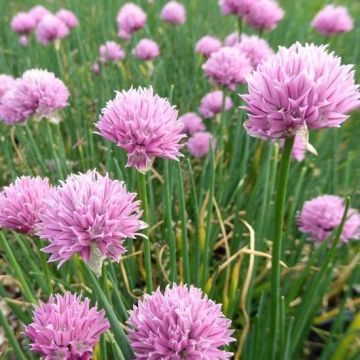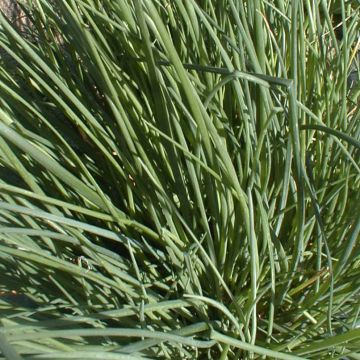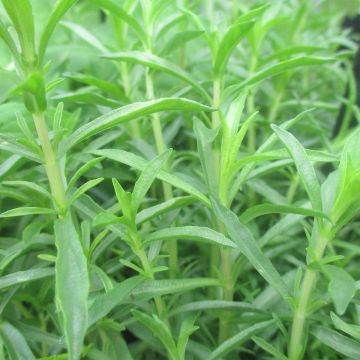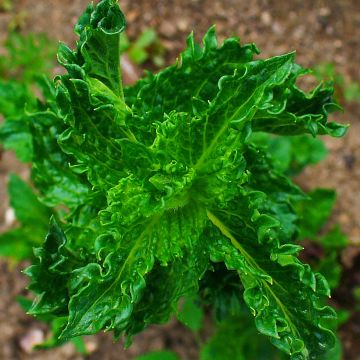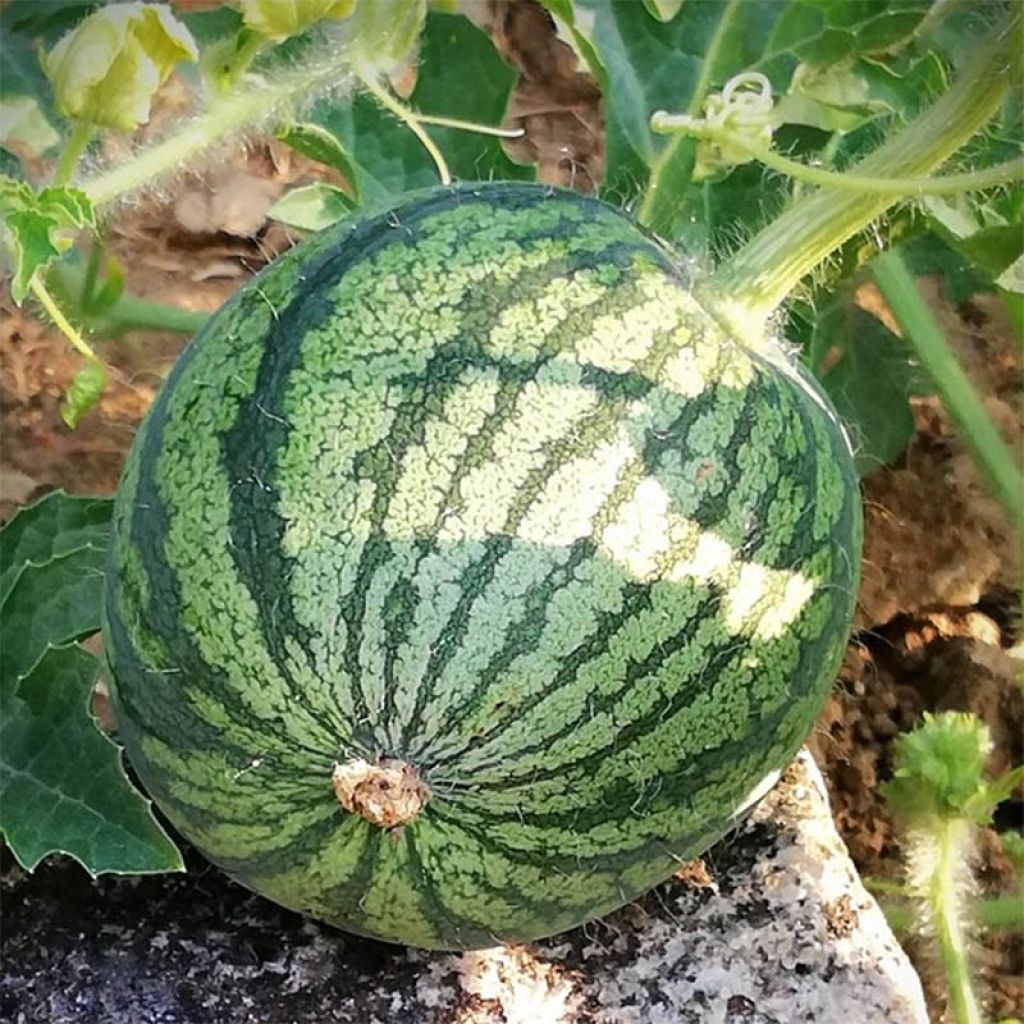

Grafted Watermelon Ingrid F1 Plants - Citrullus lanatus
Grafted Watermelon Ingrid F1 Plants - Citrullus lanatus
Citrullus lanatus Ingrid F1
Watermelon, Sugar melon
Why not try an alternative variety in stock?
View all →This plant carries a 6 months recovery warranty
More information
We guarantee the quality of our plants for a full growing cycle, and will replace at our expense any plant that fails to recover under normal climatic and planting conditions.
From €7.90 for pickup delivery and €6.90 for home delivery
Express home delivery from €8.90.
Description
The 'Ingrid' F1 watermelon is a particularly early compact hybrid variety, which bears fruit approximately 70 days after transplanting. It produces perfectly round, small-sized fruits that are smooth, marbled green with dark green, weighing 2 to 2.5 kg each, and reaching ripeness even in the north. The flesh is intensely red, juicy, crunchy, and sweet. The plant is productive, shows good resistance to diseases, and its moderate growth is suitable for family gardens. Watermelons require a sunny, warm location and regular watering to yield their best fruits. Young grafted plants are planted from April to June, after all risk of frost, for a harvest from July to September.
The grafting technique consists of giving a desired variety (here 'Ingrid') the root system of another specially selected variety, called the rootstock. This rootstock has excellent resistance to soil parasites and diseases, providing the plant with additional vigour: it becomes more resistant to challenging external conditions (such as cold climates) and will yield significantly higher than a non-grafted plant. Fruit production begins earlier and lower on the main stem of grafted plants.
Watermelon is an annual vegetable plant with creeping stems belonging to the Cucurbitaceae family. It is cultivated for its more or less spherical fruits, with sweet and melting flesh that is consumed raw, similar to other melons. It is a very refreshing fruit, particularly appreciated in hot regions. It is also used to make very good jams and sorbets. Watermelon has anti-scorbutic, purifying, and refreshing properties, and contains vitamins (A, B, C) and minerals (calcium, magnesium, iron).
Watermelons require well-fertilised soil, a warm and sunny exposure, and regular watering.
Harvest: watermelons are harvested when fully ripe: The fruit loses its shiny color and sounds hollow when tapped.
Storage: once opened, it can be stored in the refrigerator for a few days.
Gardener's tip: Perform regular hoeing and weeding, and mulching is recommended to maintain soil moisture.
Attention: When transplanting grafted plants, do not bury the graft point!
Harvest
Plant habit
Foliage
Other Vegetable plants A to Z
View all →Planting and care
Planting:
First, help the plug plants grow by transplanting them into trays or pots with a diameter of 8 to 13 cm (3 to 5in), filled with compost. Place the plants in a warm and bright location. Water regularly.
Planting in the ground should be done when the risk of frost is eliminated and the soil is sufficiently warmed up. Space the plants 1 m (3ft) apart in all directions. Dig a hole, place your plant with the graft point at ground level, without burying it, and cover with fine soil. Firmly press down and water to keep the soil moist.
Watermelon cultivation requires regular watering (about twice a week in summer, depending on the climate). Be careful, only water the base and not the leaves to prevent the appearance of mildew and powdery mildew. Regularly weed and hoe.
Cultivation
Care
Intended location
Planting & care advice
This item has not been reviewed yet - be the first to leave a review about it.
Vegetable plants
Haven't found what you were looking for?
Hardiness is the lowest winter temperature a plant can endure without suffering serious damage or even dying. However, hardiness is affected by location (a sheltered area, such as a patio), protection (winter cover) and soil type (hardiness is improved by well-drained soil).

Photo Sharing Terms & Conditions
In order to encourage gardeners to interact and share their experiences, Promesse de fleurs offers various media enabling content to be uploaded onto its Site - in particular via the ‘Photo sharing’ module.
The User agrees to refrain from:
- Posting any content that is illegal, prejudicial, insulting, racist, inciteful to hatred, revisionist, contrary to public decency, that infringes on privacy or on the privacy rights of third parties, in particular the publicity rights of persons and goods, intellectual property rights, or the right to privacy.
- Submitting content on behalf of a third party;
- Impersonate the identity of a third party and/or publish any personal information about a third party;
In general, the User undertakes to refrain from any unethical behaviour.
All Content (in particular text, comments, files, images, photos, videos, creative works, etc.), which may be subject to property or intellectual property rights, image or other private rights, shall remain the property of the User, subject to the limited rights granted by the terms of the licence granted by Promesse de fleurs as stated below. Users are at liberty to publish or not to publish such Content on the Site, notably via the ‘Photo Sharing’ facility, and accept that this Content shall be made public and freely accessible, notably on the Internet.
Users further acknowledge, undertake to have ,and guarantee that they hold all necessary rights and permissions to publish such material on the Site, in particular with regard to the legislation in force pertaining to any privacy, property, intellectual property, image, or contractual rights, or rights of any other nature. By publishing such Content on the Site, Users acknowledge accepting full liability as publishers of the Content within the meaning of the law, and grant Promesse de fleurs, free of charge, an inclusive, worldwide licence for the said Content for the entire duration of its publication, including all reproduction, representation, up/downloading, displaying, performing, transmission, and storage rights.
Users also grant permission for their name to be linked to the Content and accept that this link may not always be made available.
By engaging in posting material, Users consent to their Content becoming automatically accessible on the Internet, in particular on other sites and/or blogs and/or web pages of the Promesse de fleurs site, including in particular social pages and the Promesse de fleurs catalogue.
Users may secure the removal of entrusted content free of charge by issuing a simple request via our contact form.

































